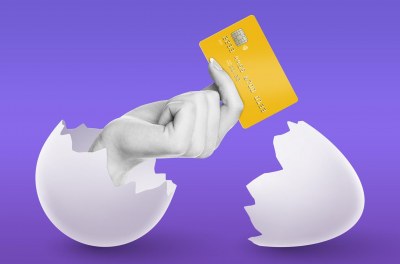How To Choose E-commerce Platform In 2020

How To Choose E-commerce Platform In 2020
2020 is a challenging year for any business, be it a small local grocery store or a well-established investment bank. No matter the size, COVID-19 has affected more or less every industry, causing markets’ contraction and companies’ collapses. However, while many were struggling to stay afloat, the new trend started to take off — e-commerce adoption.
The reason is simple — people around the world began to follow social distance rules and turned to online communication, thus flooding the internet with “buy online” searches. On top of that, companies had to find a way to survive the lockdowns and business operations restrictions. Those two factors led to the greatest online market conquest to date — just in the U.S., e-commerce grew by 30%, tremendously accelerating the shift to digital shopping.
However, while some favour ready-made solutions and others are looking for something unique, it is vital to understand every offer's pros and cons. This article will go deep into details and compare the most widely used options.
E-commerce Adoption
On the 11th of August 1994, the first electronic transaction took place — it was the purchase of Sting’s, Ten Summoner’s Tales album CD. This day is considered an official SIESTA date, while Sting’s “Shape of my heart” song became the digital trade anthem. Since then, the rise of e-commerce has led to a disruption of old practices. It offered a new and better way to conduct transactions and accept payment — through the internet.
Cash payment is slowly but surely fading away. According to the 2012 Pew Research Findings, in 2020, people already should have embraced the cashless payment method. Indeed, just at the beginning of this year, Mastercard reported a massive 40% rise in the number of tap-and-pay transactions.
2020 pandemic led to a spike in e-commerce adoption, and brand new e-commerce companies started to pop up. Not only that, pretty much every business that wishes to survive today or to have a financial structure in order is considering or already finalised its transition into the digital trade world. For example, McKinsey & Company see this trend really taking off in the B2B industry. According to their 2020 research, 75% of B2B buyers and sellers prefer to make orders online rather than in-person. In contrast, only 20% favoured old practices.
While changing customer behaviour plays a key role in transition decisions, other factors, such as efficiency, ready-available analytics, and the low bureaucracy level, are also the driving force behind them. E-commerce might become one specialised system that can help companies meet their obligations. However, while some enterprises need to add a new payment gateway or install a specific plugin, others require an all-in-one solution, such as a marketplace. Amazon is one of the best examples of full-blown e-commerce infrastructure.
Amazon
For the first seven years of its existence, Amazon made zero profit — only in 2003, the marketplace recorded its first positive budget balance. It grew to become the largest e-commerce platform in the U.S and now serves as an intermediary between 5 million sellers and 197 million customers. In 2020, the spike in the numbers of online shoppers made Amazon as attractive as never before.
A global marketplace, Amazon offers multiple advantages over traditional trade methods. Before its existence, merchants had to build the infrastructure themselves — find a reliable logistics company, have stores and offices (globally if required), win customers’ trust, and bear an entire set of liabilities. Now, things became simple — produce, pack, and send. All this became possible thanks to marketplaces like Amazon. Despite having competitors, such as eBay or Alibaba, Amazon stands out with its features, which proved to make the e-commerce endeavour much more manageable.
Features
Amazon’s main advantages over competitors are
- FBA (Fulfillment by Amazon);
- ABA (Amazon Brand Analytics).
Through FBA (Fulfillment by Amazon) the marketplace takes on the responsibility for shipping and packing the products, including its returns. That means sellers can sit back and manage the digital cash flow, spend more time analysing the sales and rolling out new offers for customers.
Another great Amazon’s feature is Amazon Brand Analytics. Not so long ago, it was only available for those that had their brand registered through Amazon Brand Registry. Now, any seller has an opportunity to try it using Seller Central credentials.
The marketplace suits large, small, and medium-sized enterprises. However, while it seems to be a place for all, there are certain limitations and fees that the seller will have to face.
Payment Methods
Amazon has a variety of payment methods. The following list is published on its site:
- Visa (including the Amazon Rewards Visa Signature Card);
- Amazon Store Card;
- Amazon Credit Builder;
- MasterCard/EuroCard;
- Discover Network;
- American Express;
- Diner’s Club (U.S. billing addresses only);
- JCB (Japanese electronic transfer method);
- NYCE (an interbank network, connecting ATMs with North American banks);
- STAR (interbank network and EFTPOS network in the United States);
- China UnionPay (credit card only);
- Visa, MasterCard, or American Express prepaid credit or gift cards.
That seems like a lot of options, but quite many are missing. Some major third-party payment processors — PayPal, Skrill, etc. — are not currently supported. Fortunately, sometimes they offer solutions to bypass restrictions — for example, PayPal offers Cash Card, Business Debit Mastercard, and PayPal Key. For the seller, that means hoping for the best, as some current customers might not be able to order goods and, therefore, will be forced to consider substitutes. However, what if the overwhelming majority are like that? Perhaps, it is better to search for other e-commerce service providers.
Fees
Every time the sale is made, Amazon charges a fee. There are several types of charges:
- Referral Fee: usually between 6% to 20% depending on the category, most sellers are charged 15%. A minimum referral fee is $0.99;
- Closing Fee: $1.80 for products falling under the media category.
Amazon also offers two account options — pro and individual. While individual account holders are the subjects to per-item fees, the pro option requires a $39.99 subscription. However, pro-choice does not exempt the merchant from per-item charges.
Amazon keeps increasing the fees, which is a big issue for the small sellers. The hike of “only” $0.09 in shipping fees on top of other charges in 2018 made many lose a big chunk of their profit.
No Guest Checkout
Unlike eBay, Amazon does not have the guest checkout — only the registered buyers can purchase the goods.
Limitations
While Amazon seems like an attractive option, there are certain limitations and threats that businesses will have to face and accept.
For many companies, brand loyalty is important — it is vital for growing the customer base. However, Amazon makes every product look replaceable, homogeneous due to standard listings, and a one-size-fits-all approach. Furthermore, due to the marketplace’s packing and shipping branding, customers tend to think that Amazon's purchased goods are not someone else’s. That prevents the company from gaining more sales and becoming the brand on its own. Instead, it takes on the role of Amazon supplier. For businesses that strive to grow (e.g., large manufacturers), this marketplace might not be the right option.
Final Words
Amazon is an all-in-one solution offering sellers access to millions of buyers. A marketplace also has in-built analytics tools that help optimise an entire management process. However, given the limitations, sometimes one size doesn’t fit all. Fortunately, there are many e-commerce alternatives available.
Amazon Alternatives
Alibaba
Just as Amazon holds the title of an e-commerce titan in the U.S., Alibaba dominates the Chinese online market. Established in 1999, Alibaba became the world’s largest mobile commerce market in gross merchandise volume (GMV). Part of why this marketplace grew so quickly is in its origins — today, China is known as “the world’s factory.” Alibaba connects primarily Chinese manufacturers with businesses worldwide, thus solving the issue of finding a reliable partner. For producers, that means selling products in bulk globally, while the buyers enjoy higher profit margins.
Features
What sets Alibaba apart from its competitors is an entirely different e-commerce solution, opposite to the all-in-one approach. Rather than have one giant marketplace, like Amazon or eBay, Alibaba has multiple sales channels for different customer types:
- Alibaba: B2B marketplace, connects wholesalers with business;
- Tmall: B2C platform, the hub for purchasing from global brands such as Nike or Gap;
- Taobao: mainly C2C platform, accommodates small merchants.
Such a range of options allows sellers to find the one marketplace that suits them best or try all three, thus attracting different customers and revenue streams. That is also relevant to those aiming to bring a variety of products on the market.
Payment Methods
Alibaba has a standard range of payment methods, such as wire bank transfer or credit card. Pretty much any transaction type is accepted as it is possible to pay directly. However, the drawback of this money transfer type is a high risk of fraud. Thus, Alibaba offers Trade Assurance, which is buyer protection. In a nutshell, the marketplace guarantees that the buyer will get the money back if something goes wrong. The following methods are covered under the protection program:
- Credit card (Visa, Mastercard);
- Bank transfer (T/T);
- Western Union;
- QIWI (Cyprus-based Russian payment provider);
- TEF (electronic funds transfer);
- Yoomoney (formerly known as Yandex.Money, Russia’s largest payment service);
- WebMoney (online payment settlement system).
Fees
Nonetheless, Alibaba, as pretty much any marketplace, charges fees for its services. For example, the Trade Assurance program described in the previous chapter is the subject of the following fees:
- Credit card: around 2.95% of the total order price;
- Wire transfer: $30 — $50;
- Western Union: $4.9 — $45.
Tmall charges its Gold Members a whopping $10,000 annual fee and demands a $25,000 deposit. On top of that, the seller must also pay a 2–5% per-item fee. All that makes it challenging for aspiring brands to enter the market and those who want to try their faith will have to take a loan.
However, while Alibaba and Tmall might be costly for some merchants, Taobao is a commission-free marketplace that only charges for product ranking.
Limitations
Despite many positive reviews, Alibaba is notorious for buyer protection issues and scams. Users complain that mediation is not properly working, and sometimes suppliers refuse to provide a full refund and withhold a 5% fee from the order’s original price. Thus, for some businesses trading on Alibaba might be similar to Russian roulette.
As for UX design, Alibaba platforms are very different from their competitors — while the range of options is relatively high, UX is messy and difficult to navigate. For the first-timers, using Alibaba is similar to walking with eyes closed through the dark forest.
While Alibaba is about connecting manufacturers and business, pretty much everyone can sell anything. With the absence of a centralised system (like FBA) and thousands of new sellers posting offers daily, it is almost impossible to determine a merchant’s reliability. That has led to the counterfeit problem that Alibaba is desperately trying to solve.
Final Words
Alibaba is an attractive option for those aiming to expand globally or want to have multiple sales streams. However, Alibaba is a giant octopus with high fees, designed primarily for well-established enterprises (except Taobao), which isn’t easy to navigate. Like Amazon, Alibaba limits payment options, and the sellers will have to accept the game rules. Nevertheless, if the company wants to avoid marketplaces all together and have the freedom to decide on payment methods, store design, etc., there is another e-commerce option — Shopify.
Shopify
Shopify is an online store builder specifically designed to accommodate the needs of small and medium-sized companies. It is straightforward, easy to navigate, and includes in-built analytics tools. Unlike marketplaces that aim to standardise listings and limit the brand’s ability to stand out, Shopify offers templates for the seller’s future online store and full website customisation — from colours and pictures to plugins and payment gateways.
Features
Shopify has its very own App store, where the seller can find a variety of plugins for their store to optimise its performance:
- Free Shipping Bar: free shipping to increase order value;
- Product Reviews: for sharing customers’ experiences;
- Product Filter & Search: filter & search options for sales’ growth;
- Infinite Options: for customisable product bundling solutions;
- Easy Contact Form: customisable professional contact forms;
- Edit Order: for effective order editing solutions;
- Trusted Site: for nourishing trust to grow conversions.
A special feature that deserves mention is Shopify’s POS (points of sale) hardware. It allows the store owner to sell in physical shops. There is a wide variety of options, such as barcode readers or check printers. POS sets Shopify apart from its competitors.
Shopify does not offer storage or logistics features, but a recent partnership with Walmart marketplaces offered sellers new opportunities. That kills two birds with one stone — not only can the company stand out, but it can also reach the right audience on the external market platform.
Payment Methods
Shopify has a massive number of payment methods. The seller can enable pretty much any money transfer option:
- Credit or debit card;
- E-wallets (Google Pay, Apple Pay, etc.);
- Third-party payment processors (e.g., PayPal);
- Wire bank transfer.
The complete list of options is available here.
Fees
Shopify charges fees that depend on the chosen plan:
- Basic: $29 monthly and 2.9% + 30¢ per transaction;
- Regular: $79 monthly and 2.6% + 30¢ per transaction;
- Advanced: $299 monthly and 2.6% + 30¢ per transaction.
On top of that, there are fees for external gateways. It is advised to use Shopify Payments to avoid extra charges.
Limitations
While Shopify is a great solution to build a unique online store, there are hidden costs.
If a seller wants to avoid charges, all external gateways must be connected to Shopify Payments, the only zero-commission solution. If the transfer was made directly, then Shopify will charge at least a 1% transaction fee.
However, Shopify Payments' main issue is the freezing of funds for an indefinite period that can last 90–120 days with no explanation. It became a common problem, and many sellers complain about their business being ruined due to this issue.
Final Words
Shopify does not offer the same features as global marketplaces, such as Alibaba or Amazon. It does not have storage facilities, and the seller is forced to fulfil the order themself. However, Shopify offers complete freedom to build a store from scratch with its App store and optimise it accordingly. While that doesn’t save the merchant from liabilities that can be avoided by selling on established marketplaces, it can help find and build new revenue streams to have equity and debt in a perfect balance.
Wrapping Up
In today’s world, having a financial structure in order is vital for a business’s survival. As more customers move online, the role of e-commerce in a company’s sustainability has risen significantly. However, digital commerce is a world with various options, where sometimes it can be challenging to navigate. To have the debt and equity balanced, one must choose wisely.
Follow us on Facebook, Twitter and LinkedIn to get more insights on what we do.

